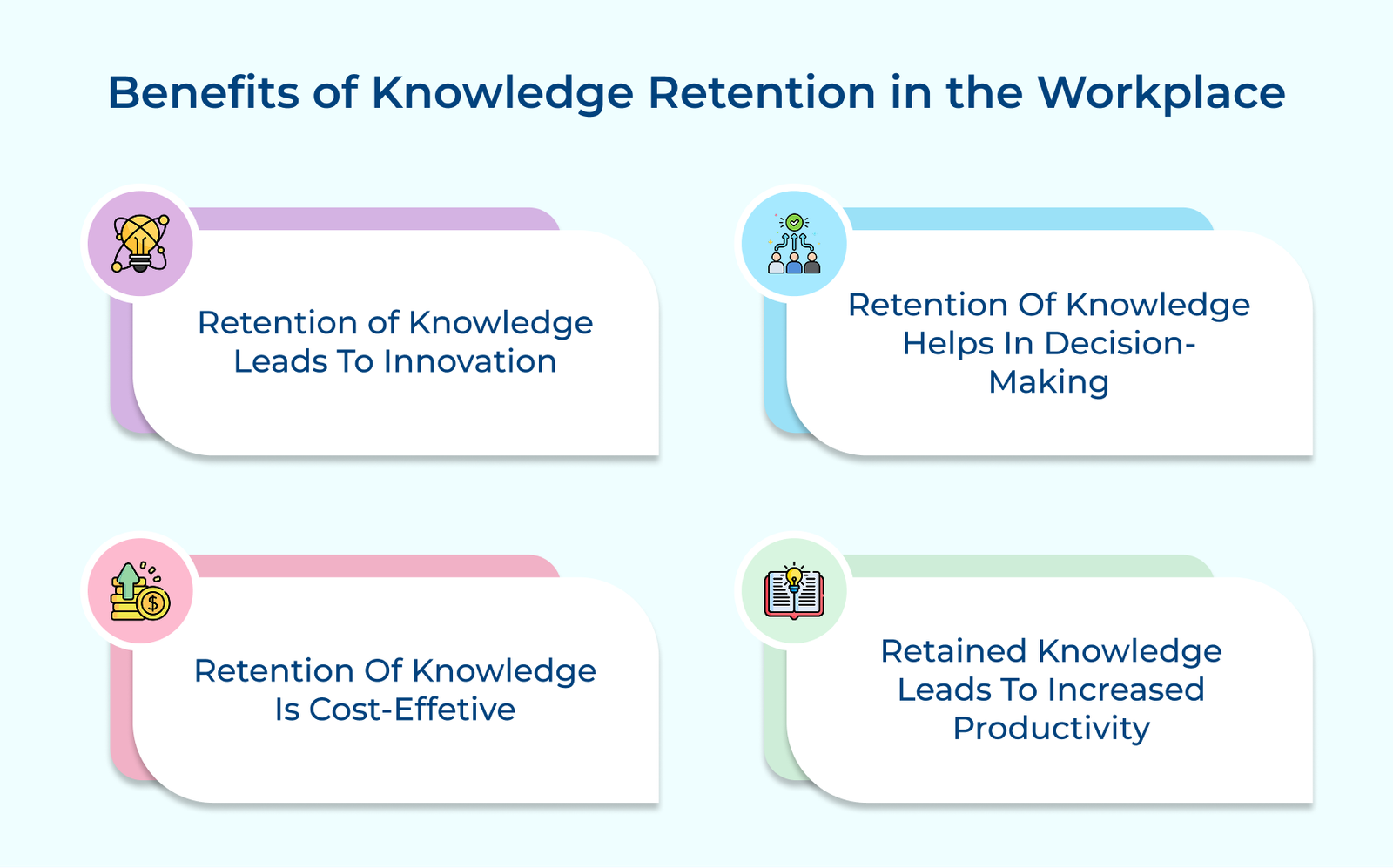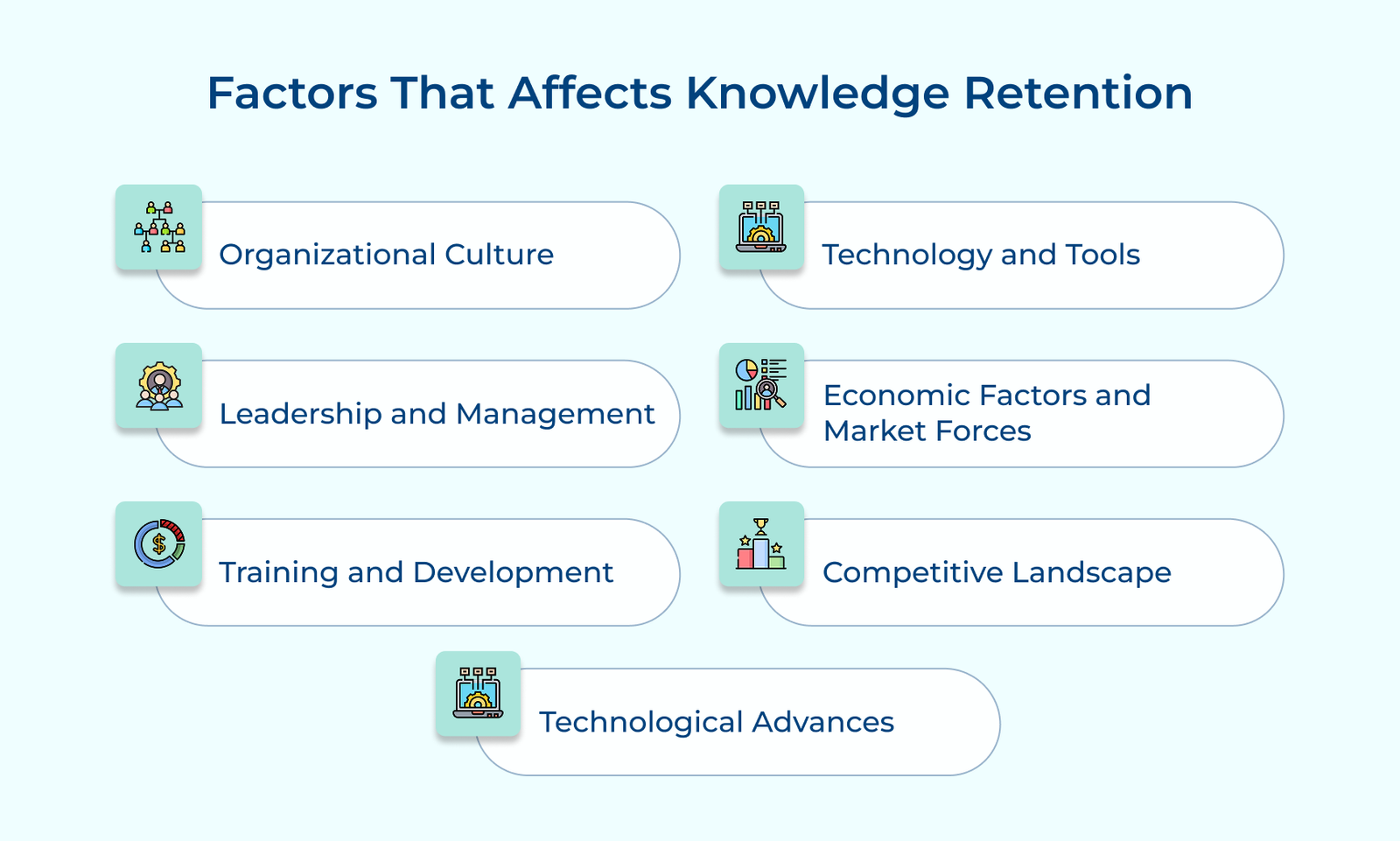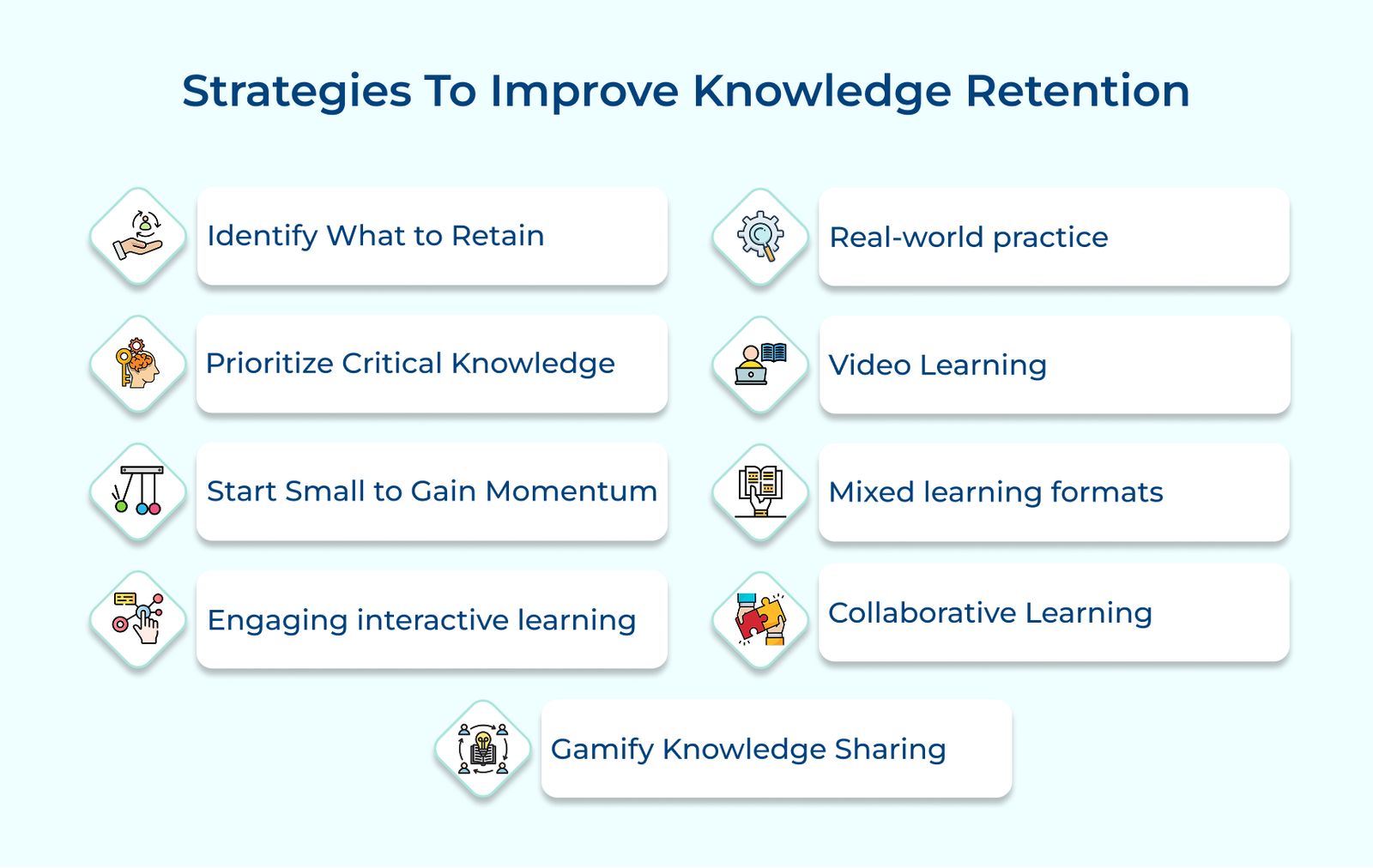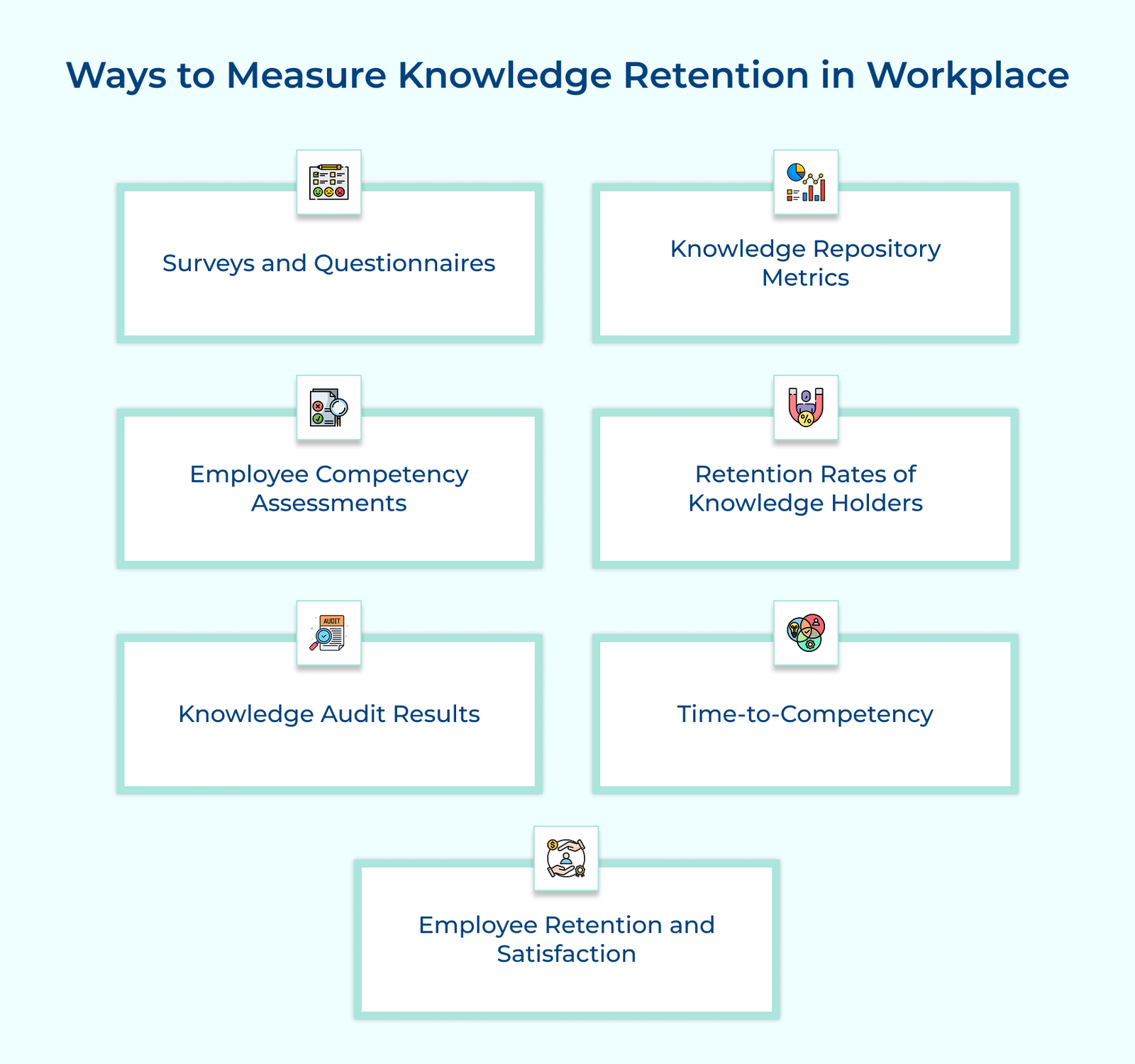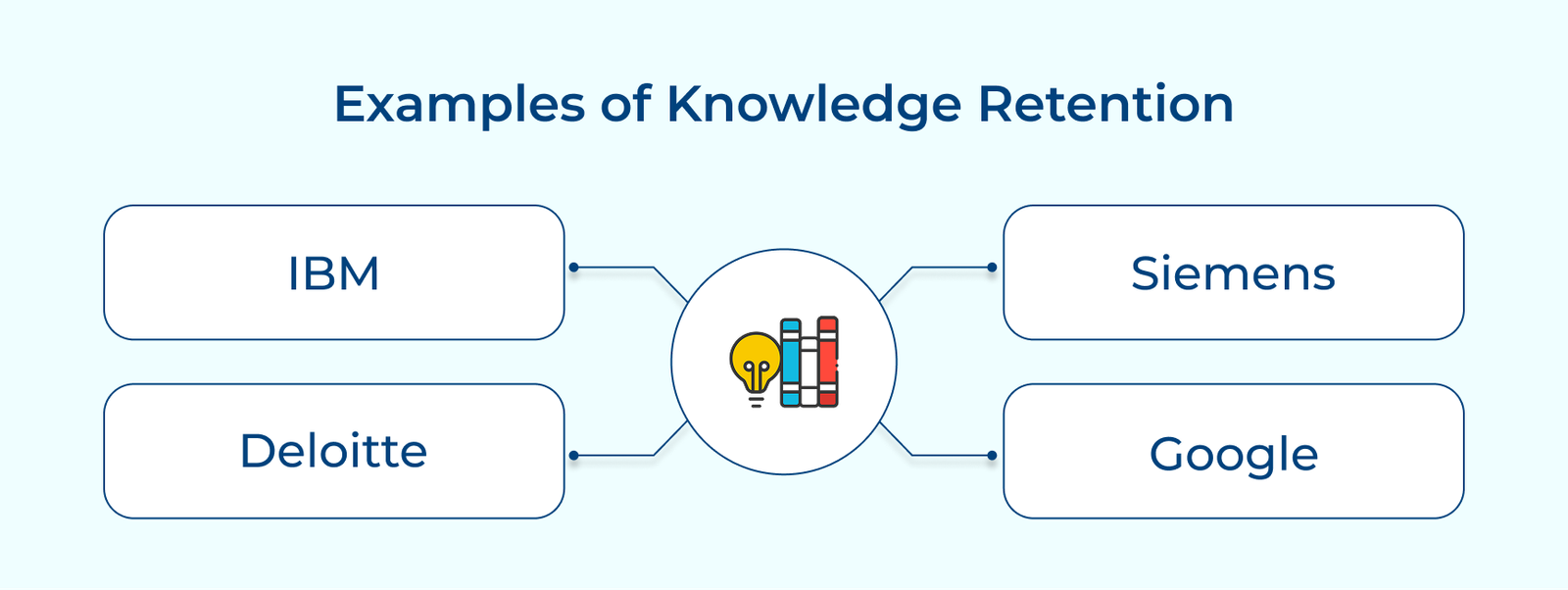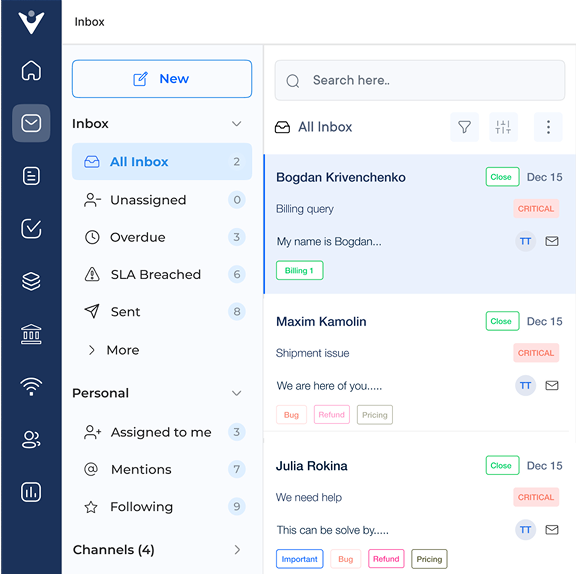1. Identify What You Want to Retain
Identifying what knowledge needs to be retained is the first crucial step in developing an effective knowledge retention strategy for a business. It begins with conducting a comprehensive knowledge audit to map out the existing knowledge within the organization. The audit should evaluate the criticality of different knowledge areas and their alignment with organizational goals. Determining critical knowledge areas is essential, as not all knowledge carries equal importance.
Organizations should prioritize retaining knowledge that is vital to their operations, competitive advantage, or long-term sustainability. Aligning knowledge retention efforts with organizational goals ensures that resources are allocated effectively.
Pro Tips:
- Involve subject matter experts and key stakeholders in the knowledge identification process.
- Regularly review and update the identified critical knowledge areas to reflect changing business needs.
- Communicate the importance of knowledge retention to employees and promote a culture that values knowledge sharing.
2. Prioritize Critical Knowledge
Prioritizing critical knowledge is a vital strategy for improving knowledge retention in businesses. Organizations can effectively allocate resources and maximize the impact of their efforts by categorizing knowledge based on its importance.
Let’s assume that a leading consulting firm might categorize its knowledge into three levels. Essential (proprietary methodologies), important (industry best practices) and nice-to-have (general business trends). The firm would then prioritize retaining the essential knowledge areas. They directly contribute to delivering high-quality services and maintaining a competitive edge.
Key Benefits:
- Efficient resource allocation: Prioritizing critical knowledge can help businesses direct their efforts toward the most valuable and impactful areas. It optimizes the use of limited resources.
- Risk mitigation: Ensuring the retention of essential knowledge, such as regulatory compliance information and critical operational processes. It helps businesses mitigate potential risks and maintain business continuity.
3. Start Small to Gain Momentum
Starting small to gain momentum is an effective strategy for improving knowledge retention in businesses. Instead of implementing a large-scale initiative from the outset, organizations can begin with pilot programs or smaller-scale projects to test their approach. One example could be a software company piloting a knowledge-sharing platform within a specific department or team.
Organizations can build momentum and generate buy-in from other teams or departments by celebrating early wins, such as increased collaboration or improved knowledge. Positive reinforcement encourages participation. It paves the way for gradually expanding the knowledge retention initiatives across the organization.
Key benefits:
- Organizational buy-in: Early successes help overcome resistance to change and encourage broader adoption within the organization.
- Continuous improvement: Pilot programs provide valuable insights and lessons learned. It enables organizations to refine their approach and achieve better results as they scale up their efforts.
4. Engaging Interactive Learning
Engaging in interactive learning is a powerful strategy for improving knowledge retention in businesses. Interactive learning methods actively involve learners in the process, making the experience more engaging for retaining information. Interactive learning offers several benefits, including increased engagement and long-term retention. Some examples of interactive learning methods include:
1. Simulations and role-playing: The immersive experiences allow learners to practice real-world scenarios. It enables them to apply knowledge in a safe and controlled environment.
2. Gamification: Incorporating game elements, such as points, badges and leaderboards, into the learning process. It can make it more engaging and motivating, increasing knowledge retention.
3. Group discussions and case studies: Collaborative learning activities encourage learners to share perspectives and retain knowledge through active participation.
How to implement:
- Conduct a needs analysis to identify the most suitable interactive methods for their specific learning objectives and target audience.
- Invest in developing high-quality interactive learning materials and simulations that align with the organization’s goals.
- Promote a culture of continuous learning by encouraging employees to actively participate in interactive learning activities and share their experiences.
5. Real-World Practice
Real-world practice is a crucial component of knowledge retention, especially in the business world. Theoretical knowledge alone is often insufficient to prepare individuals for the complexities and nuances of real-life scenarios. Practical application allows learners to apply their knowledge in a hands-on manner.
Mentoring, on-the-job training and job shadowing are powerful techniques that facilitate real-world practice. Let’s consider that a newly hired sales representative could shadow an experienced colleague during client meetings, observing their communication styles and negotiation tactics. The experience provides insights to apply knowledge in a controlled yet realistic environment.
Best practices:
- Establish structured on-the-job training programs that gradually increase the level of responsibility and autonomy for learners.
- Promote a culture of mentorship by pairing experienced professionals with newcomers, encouraging knowledge sharing in real-world scenarios.
- Encourage cross-functional collaboration and job rotations. Employees can gain exposure to different business aspects and broaden their knowledge base.
6. Video Learning
Video learning has emerged as a powerful strategy for enhancing knowledge retention in the business world. The approach leverages the engaging nature of visual and auditory content, making it an effective tool for conveying complex information in a captivating manner. One of the key advantages of video-based learning is its ability to cater to diverse learning styles.
Visual learners can benefit from the imagery and animations, while auditory learners can grasp concepts through narration. Let’s assume that a sales training video could feature role-playing scenarios. It enables learners to observe and internalize effective communication strategies.
Pro tips:
- Ensure video content is concise, well-structured and focused on specific learning objectives, avoiding information overload.
- Incorporate interactive elements, such as quizzes, simulations, or branching scenarios, to reinforce key concepts and encourage active engagement.
- Encourage peer collaboration and discussions around video content, enhancing knowledge sharing.
7. Mixed Learning Formats
Mixed learning formats are becoming increasingly popular as the main strategy to improve knowledge retention in business. The approach combines various learning methods such as online courses, in-person workshops and projects to cater to different learning styles. Employees can engage with the material more interactively by incorporating blended learning approaches.
Let’s consider that a company may offer online modules for employees to complete at their own pace. It is followed by in-person workshops where they can apply their knowledge in a real-world setting. The combination allows for a deeper understanding of the material and better retention of information.
Actionable tips:
- Improved engagement: Offering a variety of learning methods can help employees stay engaged and motivated throughout the learning process.
- Enhanced retention: The combination of online and in-person learning helps reinforce key concepts over time.
- Tailored learning experience: Employees can choose the methods that work best for them with mixed learning formats. It creates a more personalized and effective learning experience.
8. Collaborative Learning
Collaborative learning has emerged as a powerful strategy for improving knowledge retention in the business world. The approach recognizes the value of peer-to-peer interaction, knowledge sharing, and collective problem-solving. Collaborative learning offers numerous benefits, including enhanced critical thinking skills and the opportunity to learn from the experiences of others.
Knowledge-sharing platforms, such as internal social networks, wikis and discussion forums, play a crucial role in facilitating collaborative learning within organizations. The digital spaces enable employees to share insights, ask questions and contribute to a knowledge base. It promotes a culture of continuous learning and knowledge exchange.
Best practice:
- Encourage open communication and create a safe environment for knowledge sharing, where employees feel comfortable expressing their thoughts.
- Leverage technology tools that facilitate real-time collaboration, such as video conferencing, virtual whiteboards and document-sharing platforms.
9. Gamify Knowledge Sharing and Retention
Gamifying knowledge sharing is an innovative strategy that leverages the power of game mechanics to enhance engagement and long-term retention. The approach taps into the inherent human desire for competition and recognition, making the learning experience more enjoyable. Leveraging game mechanics, such as points, badges, leaderboards and rewards, can encourage active participation in knowledge-sharing activities.
Examples of gamification in knowledge retention include interactive quizzes with real-time feedback and scorekeeping. It also involves simulation-based scenarios with progressively increasing difficulty levels that immerse learners in realistic business situations.
Best practices:
- Promote a culture of healthy competition by incorporating team-based challenges or collaborative quests.
- Provide regular feedback and progress updates to maintain motivation.
- Continuously iterate the gamification approach based on participant feedback and data-driven insights.
How to Measure Knowledge Retention in the Workplace?
Measuring knowledge retention in the workplace is important for evaluating the effectiveness of training programs and ensuring that employees have the necessary skills to drive success.






